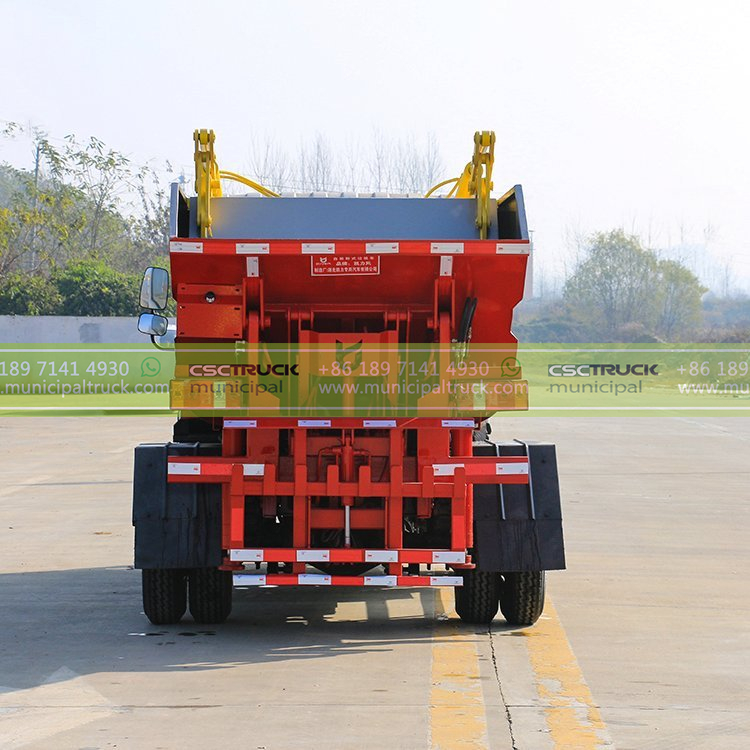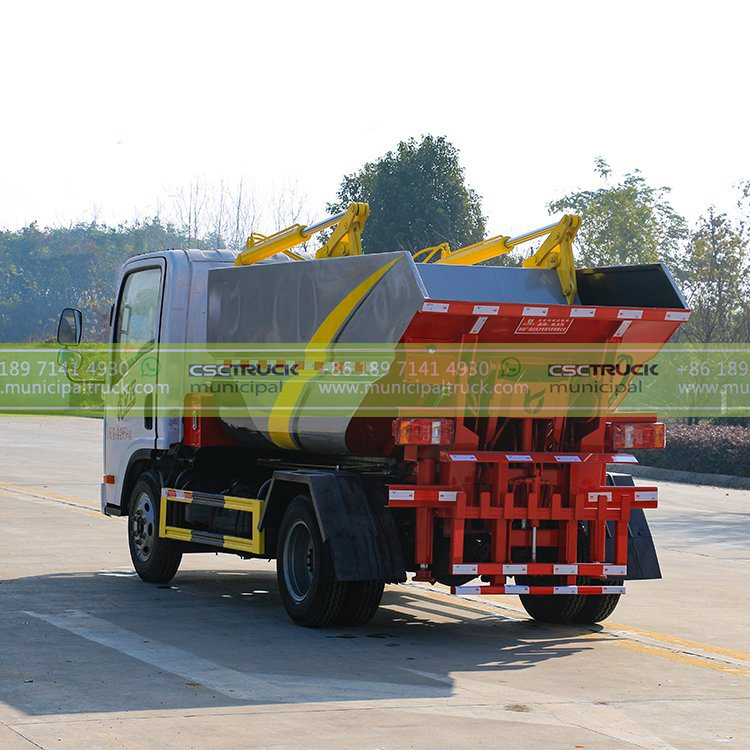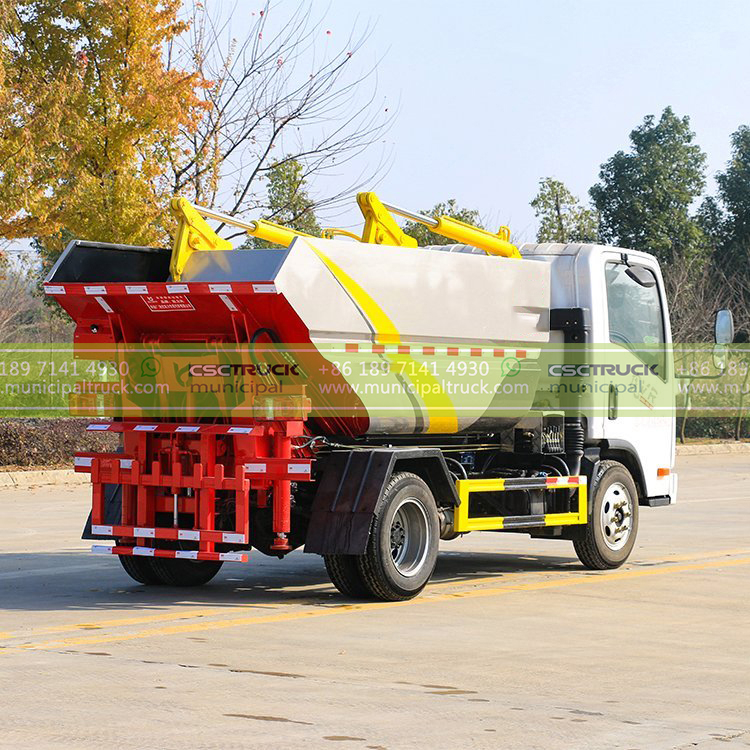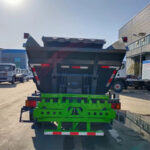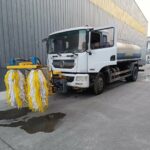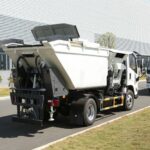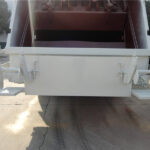In the relentless daily grind of municipal solid waste collection, the self-tipping garbage truck stands as a ubiquitous workhorse. It’s seemingly a simple action – hoisting a heavy refuse container overhead and depositing its contents into the compaction body – belies a complex interplay of forces. At the absolute core of this essential function lies the hydraulic system, a network of components transforming engine power into the controlled, immense force required for efficient tipping. Selecting, integrating, and maintaining the optimal hydraulic mechanism is not merely a technical detail; it is the fundamental determinant of a truck’s operational efficiency, longevity, safety, and overall cost-effectiveness. Understanding the nuances of this system unlocks significant potential for fleet managers and operators seeking peak performance from their vital waste collection assets.
The Hydraulic Imperative in Self-Tipping Operations – Core Functions and Demands
The self-tipping mechanism imposes unique and demanding requirements on a hydraulic system, far exceeding those of many other mobile hydraulic applications. Its primary function is unambiguous: to reliably lift containers ranging from modest residential bins to hefty commercial dumpsters, often weighing several tons when fully laden, from ground level to a height sufficient for complete emptying into the truck’s hopper. This action must be performed smoothly, rapidly, and with absolute control, hundreds of times per shift, in diverse and often challenging environmental conditions.
- Overcoming Immense Loads: The most obvious demand is generating sufficient lifting force. Hydraulic cylinders must exert tremendous pressure to overcome gravity acting on the container and its contents. This necessitates robust cylinders with large bore diameters and high-pressure capable pumps and valves.
- Ensuring Precise Control and Stability: Force alone is insufficient. The tipping cycle demands exceptional control. Operators need smooth acceleration at lift-off to prevent container shock or spillage, precise positioning at the apex for complete emptying, and a controlled, shock-free descent. Any instability, jerky motion, or uncontrolled descent poses significant safety risks to personnel, nearby property, and the container itself. Hydraulic control valves with fine metering capabilities and potential integration of load-holding valves are critical here.
- Achieving Operational Speed and Cycle Time: Efficiency in waste collection is measured in stops per hour. A slow, ponderous tipping mechanism directly reduces route productivity. The hydraulic system must deliver high flow rates (from the pump) to move the cylinder(s) rapidly, minimizing the time spent lifting, holding, and lowering the container, without compromising the essential control and stability mentioned above. This creates a constant engineering tension between speed and precision.
- Enduring Extreme Duty Cycles: Unlike many hydraulic systems that operate intermittently, a self-tipper’s hydraulics are subjected to intense, repetitive cycles. Each lift involves rapid pressure build-up, sustained high pressure during hold, and decompression/reversal during lowering. This constant cycling, combined with exposure to temperature extremes (both ambient and from the hydraulic fluid itself under load), vibration, dust, and potential moisture ingress, places immense stress on every component. Durability and resistance to wear and fatigue are non-negotiable attributes.

Component Selection – Engineering the Right Hydraulic Foundation
Optimizing performance starts with meticulously selecting the core components that constitute the hydraulic mechanism, ensuring they are not just individually capable, but harmoniously matched to the specific demands of the self-tipping application and the truck’s operational profile.
- Hydraulic Cylinders: The Muscle: Cylinders are the actuators converting fluid power into linear motion. For self-tippers, robust double-acting telescopic cylinders are almost universally employed due to their compact retracted length and significant extended stroke. Key selection criteria include:
- Bore and Rod Diameter: Dictate force output (lifting capacity) and structural strength. Larger bores generate more force but require higher flow for speed. Rod diameter must withstand significant compressive loads during extension and potential side-loading.
- Stages: Multi-stage telescopic design enables high lift heights from a compact package. The number of stages impacts stability – more stages can introduce potential for slight wobble if not perfectly aligned or if wear occurs.
- Construction and Seals: Heavy-duty welded construction with hardened chrome-plated rods and high-quality, abrasion-resistant seals (like polyurethane) are essential for longevity under punishing conditions. Rod wipers prevent contaminant ingress.
- Hydraulic Pump: The Heart: The pump generates the flow and pressure needed. Variable displacement piston pumps are often the preferred choice for high-performance self-tippers due to their efficiency and inherent pressure compensation.
- Flow Rate (GPM/LPM): Directly determines cylinder extension and retraction speed. Must be sufficient for rapid cycle times without excessive heat generation.
- Pressure Rating (PSI/Bar): Must comfortably exceed the maximum pressure required to lift the heaviest anticipated load, providing a safety margin and ensuring longevity. Pumps rated for continuous operation at 3000-3500+ PSI are common.
- Efficiency: High volumetric and mechanical efficiency minimizes parasitic losses, reducing fuel consumption and heat generation.
- Control Valves: The Brain: Directional control valves manage fluid flow to the cylinders. Proportional valves offer significant advantages over simple on/off types:
- Precise Metering: Allow infinitely variable control over cylinder speed and acceleration/deceleration, enabling the smooth, controlled motion critical for stability and safety.
- Load-Holding Capability: Integrated counterbalance or pilot-operated check valves prevent uncontrolled descent in case of a hose failure or valve malfunction, a critical safety feature.
- Flow Control: Fine-tuning flow to each cylinder stage can optimize synchronization and motion profile.
- Reservoir, Fluid, and Filtration: The Lifeblood System: Often overlooked but vitally important. The reservoir must be adequately sized for heat dissipation and fluid conditioning. High-quality anti-wear hydraulic fluid with excellent viscosity index (stable viscosity across temperature ranges) and oxidation stability is crucial. Filtration is paramount – high-efficiency return line filters and potentially offline filtration circuits are necessary to maintain fluid cleanliness (targeting ISO 18/16/13 or better), which is the single biggest factor in preventing premature component wear and system failure.

System Integration, Control Logic, and Advanced Optimization
Selecting premium components is only the first step. How these components are integrated, controlled, and potentially enhanced defines the ultimate performance envelope of the self-tipping mechanism.
- Optimized Circuit Design: The hydraulic schematic must minimize pressure drops, ensure adequate cooling, and incorporate necessary safety features like pressure relief valves and filtration. Efficient plumbing routing and sizing reduce flow resistance and heat generation. Strategically placed accumulators can dampen pressure spikes during valve shifts or load changes, protecting components and smoothing motion.
- Electronic Control Integration: Modern self-tippers increasingly leverage electronic control units (ECUs) for the hydraulics. This offers transformative benefits:
- Programmable Motion Profiles: ECUs can execute complex, optimized lift/lower curves. For example: fast initial lift-off (minimizing time), gentle deceleration near the apex (preventing shock), a brief hold for complete emptying, controlled initial descent, and faster lowering once clear of the hopper – all automatically managed. This maximizes speed while enhancing stability and safety.
- Load-Sensing and Adaptive Control: Advanced systems can monitor pressure (indicating load) and dynamically adjust flow and valve commands for optimal performance under varying container weights, ensuring consistent, controlled motion whether empty or full.
- Diagnostics and Safety Interlocks: ECUs can monitor system health (pressure, temperature, cycle counts), provide fault codes for maintenance, and enforce safety interlocks (e.g., preventing lift unless the tailgate is securely closed, or automatically slowing descent near the ground).
- Enhancing Efficiency: Beyond core function, optimization focuses on reducing parasitic losses. Load-sensing pumps deliver only the flow and pressure demanded by the system at any moment, drastically reducing energy consumption and heat generation compared to fixed-displacement pumps with constant flow. Efficient cooler sizing and placement are critical to manage fluid temperatures, especially in hot climates or during intensive operation.
Sustaining Peak Performance – Maintenance and Broader Fleet Context
The most sophisticated hydraulic system will degrade rapidly without disciplined maintenance, and its performance must be considered within the broader context of the fleet’s diverse needs.
- Proactive Maintenance Regimen: This is non-negotiable for hydraulic longevity and reliability. Key elements include:
- Fluid Analysis: Regular sampling and analysis of hydraulic fluid is the best predictive maintenance tool, detecting contamination (wear metals, water, dirt) and fluid degradation before they cause component failure.
- Filter Changes: Strict adherence to filter change intervals based on service hours and fluid condition monitoring. Never bypass filters.
- Visual Inspections: Daily checks for leaks (even minor ones indicate seal issues), damaged hoses, bent rods, and loose fittings. Inspect cylinder rods for scoring or corrosion.
- Seal and Hose Replacement: Proactively replace hoses based on age and condition (flex cycles, weather cracking) before they fail. Address leaking seals promptly to prevent contamination ingress and further damage.
- Operator Training: Operators are the first line of defense. Training should emphasize smooth operation using the controls as intended (no “banging” the container up or down), awareness of potential hydraulic issues (unusual noises, slow operation, leaks), and the critical importance of reporting problems immediately. Understanding the programmed motion profiles helps them work efficiently with the system.
- The Fleet Perspective: Garbage Trucks and Beyond: Optimizing the hydraulic system on a self-tipping garbage truck delivers tangible benefits: faster routes, reduced downtime, lower repair costs, enhanced safety, and extended vehicle life. However, waste management fleets are diverse ecosystems. Alongside the self-tippers, front loader garbage trucks grapple with heavy commercial containers using different lift geometries, rear loader garbage trucks rely on hydraulics for packing rams and tailgates, and specialized sewer trucks utilize complex high-pressure hydraulic systems for jetting nozzles and powerful vacuum pumps. While the specific mechanisms differ, the core principles of hydraulic optimization – selecting robust components matched to the demand, employing intelligent control, ensuring clean fluid, and implementing rigorous maintenance – are universally applicable across the fleet. Investing in hydraulic excellence for the self-tipper translates into lessons and practices that benefit the entire operation, ensuring every vehicle, regardless of its specific waste handling task, performs reliably and efficiently day in and day out. The silent, powerful lift of the container becomes a testament to well-engineered and well-maintained hydraulic power.

